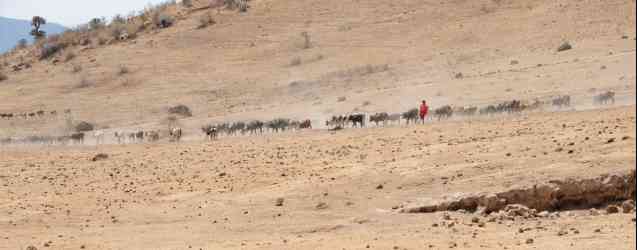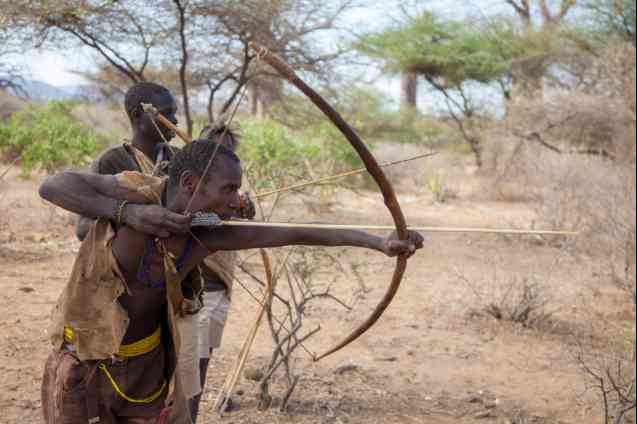Africa is a very big place with many different people and ways of living. It is the second biggest continent in the world and is so big that the United States and the United Kingdom fit inside it many times!
There are more than 50 countries in Africa and over 1.2 billion people live there. But Africa is not just one group of people; it has more than 3,000 different tribes, each with their own special ways and traditions.
South Africa is a good example of this because it has 11 different languages that are all important.

The Maasai African tribes live in East Africa, in Kenya and Tanzania. They wear bright red clothes and live on big grassy lands where lions and other animals roam. They are known as brave warriors and love their cows very much.
The Maasai African tribes believe their first ancestor got cows from the sky god Ngai, so cows are very special and sacred to them. They drink cow’s blood mixed with milk, but only eat meat on special days.
The Maasai do a jumping dance called the Adamu when boys become men. The highest jumper gets the best bride. Their clothes, called shuka, come in bright colors like red (which means life and blood), orange (friendship), blue (sky and rain), green (growth), and yellow (fertility).
They also have a special custom of spitting to bring good luck, like spitting in your hand when you shake an elder’s hand or on a baby’s head to protect it.

The Hadza live near a big lake in Tanzania. They are one of the last tribes who still live like people did a very long time ago, by hunting animals and gathering plants. Men hunt and collect honey with the help of special birds, while women gather fruits and eggs.
They don’t have a king or leader; everyone decides things together. The Hadza speak a language that no one else speaks. They have stories about four times in history: big hairy giants who ate raw meat, cave people who used fire, smaller people who made tools and huts and played games, and the present-day people who use names to remember time.
Today, only about 400 Hadza still live this old way because modern life is changing their land.
The Samburu African tribes live in a dry place in Kenya. They take care of cows, goats, sheep, and camels. Because the land is dry, they move around to find grass for their animals.
The men wear bright pink or black cloth like skirts and lots of bracelets. The warrior men wear their hair in long braids. The women shave their heads and wear two cloths, usually blue or purple, and paint their bodies with red ochre like the Himba tribe.
The Samburu African tribes are ruled by their elders, the oldest people, who make all the big decisions and can even curse others. They believe in a god called Nakai who helps them live right. The Samburu still live by old customs and traditions.
The Karo live by a river in Ethiopia and are famous for painting their faces and bodies with white, yellow, red, and black colors made from rocks and charcoal.
Both men and women paint themselves with dots and lines, often looking like birds. Women also make small cuts on their skin and rub ash in to make pretty scars that show they are grown-up and wise.
Men make scars on their chests when they have been brave and killed enemies or wild animals. Men wear hair buns with feathers, which they fix every few months. Boys must jump over bulls many times to become men.
Women show they are strong by letting themselves be whipped until they bleed, and the man who whipped them must take care of them if something bad happens.
The Karo also have a special man who talks to crocodiles to keep peace between people and animals. This secret is passed from father to son.
People: About 50,000
The Himba live in Namibia, in a very dry place. They are famous for rubbing red clay on their skin and hair. It makes their skin look red and protects them from the sun.
The Himba women spend a lot of time making their hair look nice. They use clay, butter, and herbs to make long braids. They also wear lots of jewelry.
The Himba people take care of cows and goats. The men go away for a long time to find work, so the women take care of the homes and children.
The Himba believe in a god called Mukuru and talk to their ancestors for help. They still live in a very old-fashioned way.
People: About 10-12 million
The Zulu are the biggest tribe in South Africa. They are famous for being strong warriors. A long time ago, their king, Shaka, made them very powerful.
The Zulu live in houses made of grass. They are good at farming and take care of animals.
The Zulu have dances where they wear animal skins and masks. They also make beautiful beadwork.
The Zulu believe in a god and also talk to their ancestors. They have many stories and songs that they pass down to their children.
People: About 8 million
The Xhosa live in South Africa, near the coast. They are known for their language, which has clicking sounds.
The Xhosa have special ceremonies when boys become men. They also have healers who use herbs to help people who are sick.
The Xhosa make colorful clothes and beadwork. They also have stories about a hero named Xhosa.
People: About 100,000
The San live in southern Africa, in the Kalahari Desert. They are one of the oldest people in the world.
The San are very good at hunting and finding plants to eat. They know a lot about the desert.
The San paint pictures on rocks that show their life and stories. They also have dances where they talk to their gods.
People: About 1.1 million
The Ndebele live in South Africa. They are famous for painting their houses with bright colors and patterns.
The Ndebele women wear beautiful clothes and jewelry. They make blankets with colorful designs.
The Ndebele have special ceremonies for weddings and other important events. They also tell stories about their history.
I have tried to make these explanations as simple as possible, using words that a 5-year-old can understand.
African Crafts Market. (n.d.). African Tribes.
Britannica. (n.d.). Africa: People.
Gorilla Uganda Safaris. (n.d.). 10 Famous African Tribes & Their Cultures & Traditions
Rhino Africa Blog. (2018, August 13). 7 Amazing African Tribal Traditions.
The Indigenous. (n.d.). African Indigenous Populations Database.
UNESCO Institute for Statistics. (2012). Cultural Statistics in Africa: The Missing Link.
Victoria Falls Guide. (n.d.). African Traditions.
Vogue Business. (2021, October 6). Artisan Luxury’s New Focus: Nigeria.
The Metropolitan Museum of Art. (n.d.). African Influences in Modern Art.
African Union. (n.d.). African Culture: Versatile Approach to Realize the Africa We Want.
We serve as an educational and cultural sacred space for children and community members offering musical performances, theater and education.
Copyright © 2025 PAN AFRICAN CULTURAL GROUP